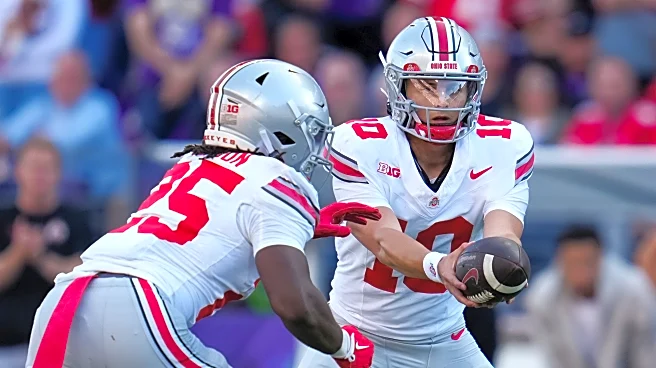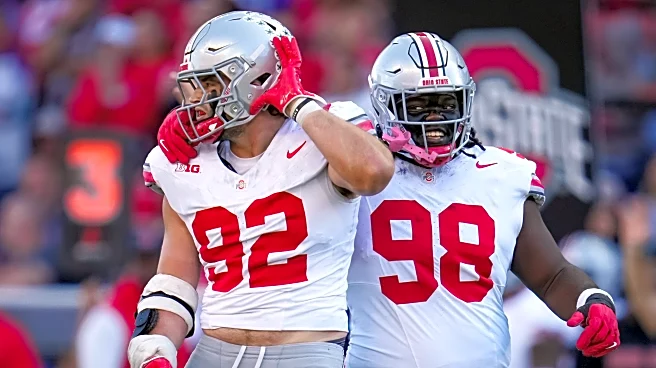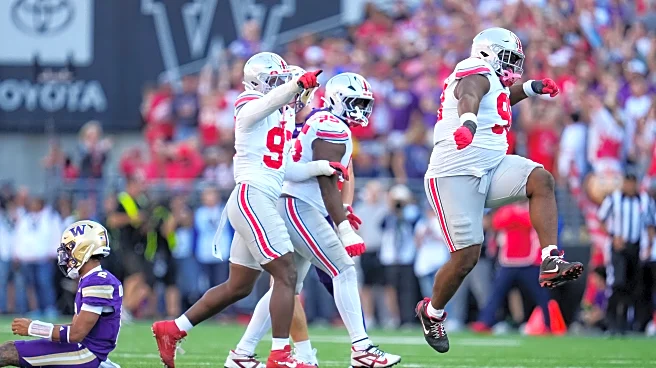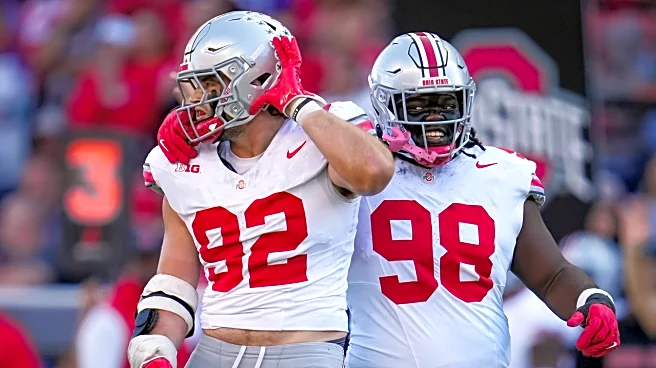The simplest number from Ohio State’s 24–6 win at Washington says most of the story: 6.
That’s how many points the Buckeyes allowed a Washington offense that came into Saturday’s matchup averaging 55.7 points per game, the best scoring mark in the Big Ten and one of the nation’s most explosive attacks.
Holding a team that prolific to two field goals and zero touchdowns is not a fluke. It was the product of a clear game plan executed at a high level. Attack the quarterback, win the third-down battle,
and make the Huskies score the hard way.
A tactical blueprint: pressure + third-down dominance
Washington’s offense lives on vertical shots and quick-strike scoring drives. The most reliable counter is consistent pressure that turns potentially long possessions into grind-it-out series.
Ohio State executed that counter perfectly.
The pass rush routinely forced Williams Jr. to get the ball out late or take hits. A sack on third down inside the opponent 10 in the third quarter preserved the Buckeyes’ lead and turned a likely touchdown drive into a 28-yard field goal.
That sequence, push them back with pressure, force an imperfect fourth-down or a field-goal attempt, repeated itself. The Huskies moved the ball at times (two long drives that resulted in field goals), but they could not convert those opportunities into touchdowns.

Standouts on defense and their impact
Caden Curry’s line was the clearest statement: 11 tackles (9 solo), three sacks, and five TFLs. Kayden McDonald finished with seven tackles, two sacks, and three TFLs. Their interior and edge pressure collapsed pockets and turned designed gains into negative plays.
The Husky running game (outside of Jonah Coleman’s 70 yards) was neutralized, and Demond Williams Jr.’s rushing production was effectively erased after sack yardage was accounted for.
On third down, Washington finished 1-for-11, a brutal conversion rate when you’re trying to keep drives alive against a top defense.
Those raw numbers explain why the Huskies, usually comfortable scoring in bunches, left Seattle with just two field goals.
What this means going forward
This wasn’t just a regular win. Ohio State ended Washington’s 22-game home winning streak, a historical milestone that underlines how big a defensive performance this was.
More than that, the game served as a live stress test. Could Ohio State stop a league leader in scoring who brings tempo and playmakers? The answer, Saturday night, was yes.
A defense that can turn red-zone trips into field goals and force three-and-outs from what had been a high-octane attack changes how future opponents will approach game plans. It imposes new burdens on playcallers, more patience, fewer gambling shots, and, importantly, gives Ryan Day’s offense room to operate without needing to outscore opponents in every quarter.














